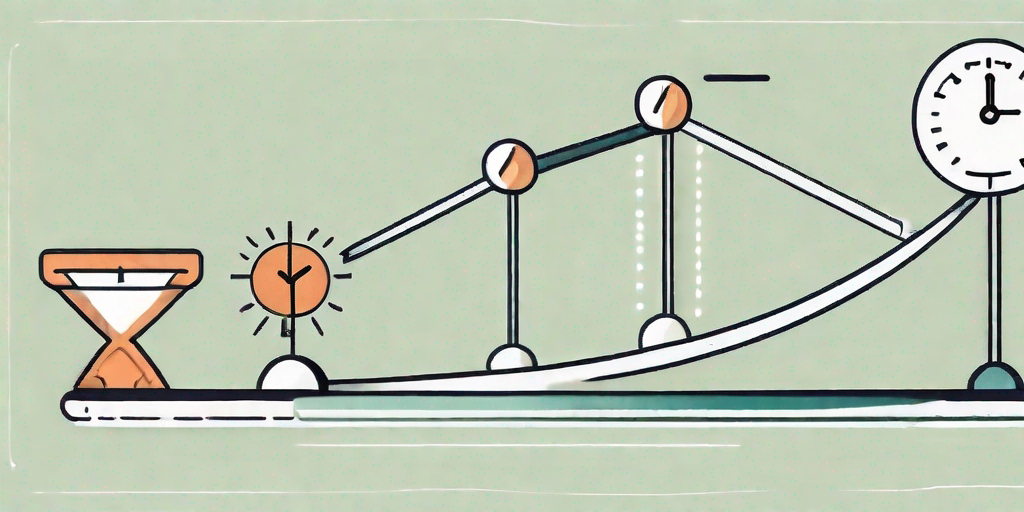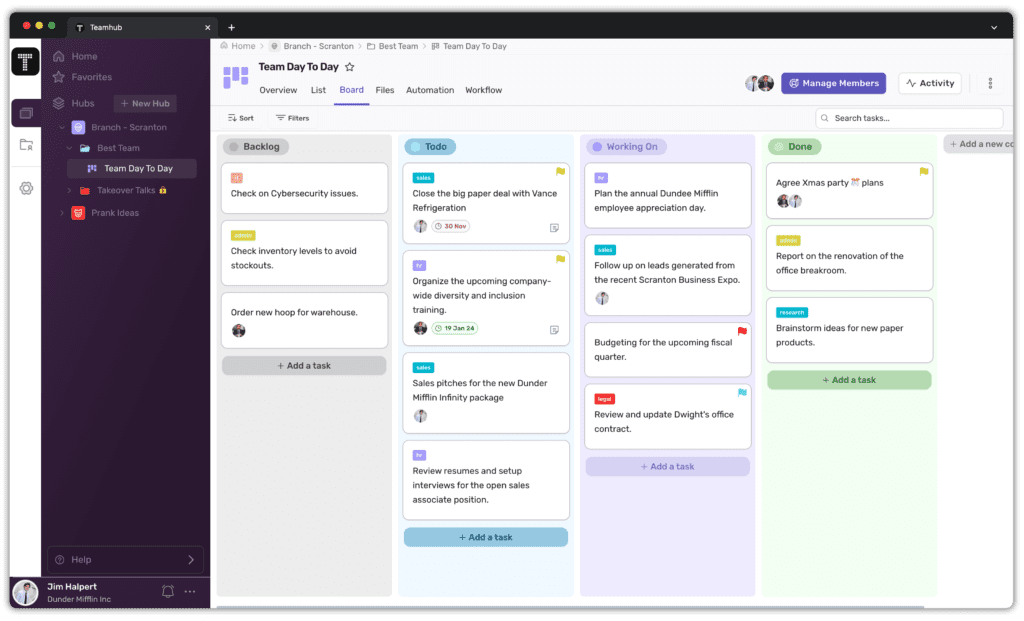LIMITED TIME OFFER
Replace all of these

with a single tool for just $1 per month for your entire team
UNLIMITED USERS
UNLIMITED PROJECTS
UNLIMITED CHATS
UNLIMITED DOCS
UNLIMITED STORAGE
AND MORE..
Schedule Performance Index (SPI) Explained

The Schedule Performance Index (SPI) is a key metric used in project management to measure and assess the efficiency and effectiveness of a project’s schedule performance. Understanding SPI is crucial for project managers to plan and execute projects successfully.
Understanding the Basics of Schedule Performance Index (SPI)
Schedule Performance Index (SPI) is a tool used to determine how well a project is adhering to its planned schedule. It provides project managers with valuable insights into the project’s progress in terms of time management.

To fully grasp the concept of SPI, it is essential to define what the Schedule Performance Index exactly is and comprehend its significance in project management.
Defining Schedule Performance Index (SPI)
The Schedule Performance Index, commonly referred to as SPI, is a ratio that compares the earned value of a project to its planned value. In simple terms, SPI measures how efficiently the project team is utilizing the scheduled time.
An SPI value greater than 1 indicates that the project is ahead of schedule, while an SPI value less than 1 implies the project is behind schedule. If the SPI value equals 1, it means the project is progressing as planned.
Let’s dive deeper into the calculation of SPI. The earned value of a project represents the value of work completed up to a certain point in time. It is calculated by multiplying the percent complete of each task by its planned value. On the other hand, the planned value is the sum of the planned values of all tasks in the project.
For example, if a project has a planned value of 100 and the earned value is 120, the SPI would be 1.2 (120/100), indicating that the project is ahead of schedule.
Importance of Schedule Performance Index in Project Management
SPI provides project managers with a quantitative measure of how the project is performing against its schedule. By analyzing the SPI, project managers can identify potential schedule deviations early on, allowing them to take corrective actions to bring the project back on track.
Moreover, SPI helps project managers in making informed decisions regarding resource allocations. If the SPI is consistently below 1, it may indicate that the project team is overburdened or lacking the necessary resources to meet the schedule. In such cases, project managers can allocate additional resources or adjust the project timeline accordingly.
In addition to resource allocations, SPI also aids in process improvements. By analyzing the SPI values of different projects, project managers can identify areas of improvement in their project management processes. They can then implement changes to enhance time management practices and increase the overall efficiency of future projects.
Furthermore, SPI plays a crucial role in project forecasting. By tracking the SPI values throughout the project’s lifecycle, project managers can predict the project’s future performance and estimate the time required to complete the remaining work. This information is invaluable for stakeholders and clients who rely on accurate project timelines for planning and decision-making.
In conclusion, the Schedule Performance Index (SPI) is a vital tool in project management that provides project managers with valuable insights into a project’s adherence to its planned schedule. By analyzing the SPI values, project managers can identify schedule deviations, make informed decisions regarding resource allocations and process improvements, and accurately forecast project timelines.
Calculating the Schedule Performance Index (SPI)
Calculating the Schedule Performance Index (SPI) is a crucial step in project management. It provides valuable insights into the project’s schedule performance and helps project managers make informed decisions. To accurately derive the SPI value, it is essential to understand the key components and follow a step-by-step process.
Key Components for SPI Calculation
When calculating the SPI, two key components come into play: Planned Value (PV) and Earned Value (EV). These components provide a comprehensive view of the project’s progress and help evaluate its schedule performance.
Planned Value refers to the overall value of the work scheduled to be completed within a given time frame. It is determined by multiplying the planned percentage of work completed by the overall budget for the project. This component helps project managers set realistic goals and establish a baseline for measuring progress.
Earned Value, on the other hand, represents the value of the work that has been completed up to a specific point in the project’s timeline. It is calculated by multiplying the percentage of actual work completed by the overall budget for the project. This component provides an objective measure of the project’s progress and allows project managers to assess if the work is being completed as planned.
Step-by-Step Process of SPI Calculation
Deriving the SPI value involves a step-by-step process that ensures accuracy and reliability. By following this process, project managers can gain a comprehensive understanding of the project’s schedule performance.
- Determine the Planned Value (PV): Multiply the planned percentage of work completed by the overall project budget. This will give you the Planned Value, which represents the value of the work scheduled to be completed.
- Determine the Earned Value (EV): Multiply the actual percentage of work completed by the overall project budget. This will give you the Earned Value, which represents the value of the work that has been completed up to a specific point in the project’s timeline.
- Calculate the Schedule Performance Index (SPI): Divide the Earned Value (EV) by the Planned Value (PV). The formula for SPI is: SPI = EV / PV. This calculation will provide you with the SPI value, which indicates the project’s schedule performance.
By diligently following this step-by-step process, project managers can obtain an accurate SPI value that reflects the project’s schedule performance. This information empowers them to make informed decisions, identify potential issues, and take corrective actions to keep the project on track.
Unlock Efficiency with Teamhub

Interpreting the Schedule Performance Index (SPI) Results
Once the Schedule Performance Index has been calculated, it is crucial to interpret the results to gain meaningful insights into the project’s schedule performance.
The Schedule Performance Index (SPI) is a key metric used in project management to assess the efficiency and progress of a project’s schedule. It provides valuable information about whether a project is ahead of schedule or behind schedule.
What a Positive SPI Indicates
When the SPI value is greater than 1, it indicates that the project is ahead of schedule. This means that the project team is completing the work faster than planned, which is a positive sign of efficient time management.
A positive SPI implies that the project progress is favorable in terms of time, and the project manager can expect to complete the project ahead of schedule. This can be attributed to various factors such as effective resource allocation, skilled team members, and streamlined processes.
Furthermore, a positive SPI reflects a project’s ability to meet deadlines and deliver results promptly. It showcases the project team’s ability to efficiently utilize resources and manage time effectively, resulting in increased productivity and customer satisfaction.
What a Negative SPI Indicates
On the other hand, when the SPI value is less than 1, it suggests that the project is behind schedule. This means that the project team is falling behind the planned schedule, indicating potential delays and time management issues.

A negative SPI implies that the project progress is unfavorable in terms of time, and immediate corrective actions need to be taken to bring the project back on track. This could involve reassessing the project schedule, identifying bottlenecks, and implementing strategies to improve time management.
Additionally, a negative SPI may indicate poor resource allocation, lack of coordination among team members, or unforeseen challenges that have disrupted the project timeline. It is essential for the project manager to identify the root causes of the delays and take proactive measures to mitigate them.
By closely monitoring the SPI and taking appropriate actions, project managers can ensure that the project stays on track and meets its scheduled deadlines. Regular analysis of the SPI enables project teams to identify trends, anticipate potential risks, and make informed decisions to optimize project performance.
SPI and Project Forecasting
The Schedule Performance Index plays a crucial role in project forecasting by enabling project managers to predict future project performance based on historical data and trends.
Using SPI for Future Project Predictions
By analyzing the SPI of previous projects and comparing them to the current project’s SPI, project managers can make informed predictions about the future project performance. They can identify patterns and trends that help in estimating potential schedule deviations and managing resources effectively.
Using SPI for future project predictions allows project managers to proactively mitigate risks and allocate resources optimally, maximizing the chances of completing future projects on time and within budget.
Limitations of SPI in Project Forecasting
While the Schedule Performance Index is a valuable tool for project forecasting, it is important to acknowledge its limitations. SPI only considers the schedule performance and does not take into account other factors such as scope changes or cost performance.
Project managers must use SPI in conjunction with other project management metrics to gain a holistic view of the project’s overall performance and make accurate forecasts.
Improving Schedule Performance Index (SPI)
Project managers strive to enhance the Schedule Performance Index to ensure better schedule adherence and project success.
Strategies for Enhancing SPI
There are several strategies that project managers can employ to improve the Schedule Performance Index:
- Effective planning and scheduling to accurately estimate project timelines.
- Regular monitoring and tracking of project progress against the planned schedule.
- Streamlining communication channels to reduce delays and misinterpretations.
- Proactive risk management to identify and mitigate potential schedule risks.
- Ensuring sufficient resources are allocated to each project task.

Common Mistakes to Avoid When Improving SPI
While working towards enhancing the Schedule Performance Index, project managers should be mindful of common mistakes that can hinder progress:
- Over-optimistic scheduling that doesn’t consider potential delays and challenges.
- Poor resource management, leading to a bottleneck in project execution.
- Inadequate project monitoring and neglecting to track progress regularly.
- Failure to adapt and adjust the schedule when faced with unexpected changes.
- Lack of effective communication among project team members and stakeholders.
By actively implementing strategies and avoiding common pitfalls, project managers can improve the Schedule Performance Index and enhance the overall efficiency and success of their projects.
In conclusion, the Schedule Performance Index (SPI) is a vital tool in project management that enables project managers to assess and manage project schedule performance effectively. By understanding and utilizing SPI, project managers can make informed decisions, accurately forecast project outcomes, and drive project success.


